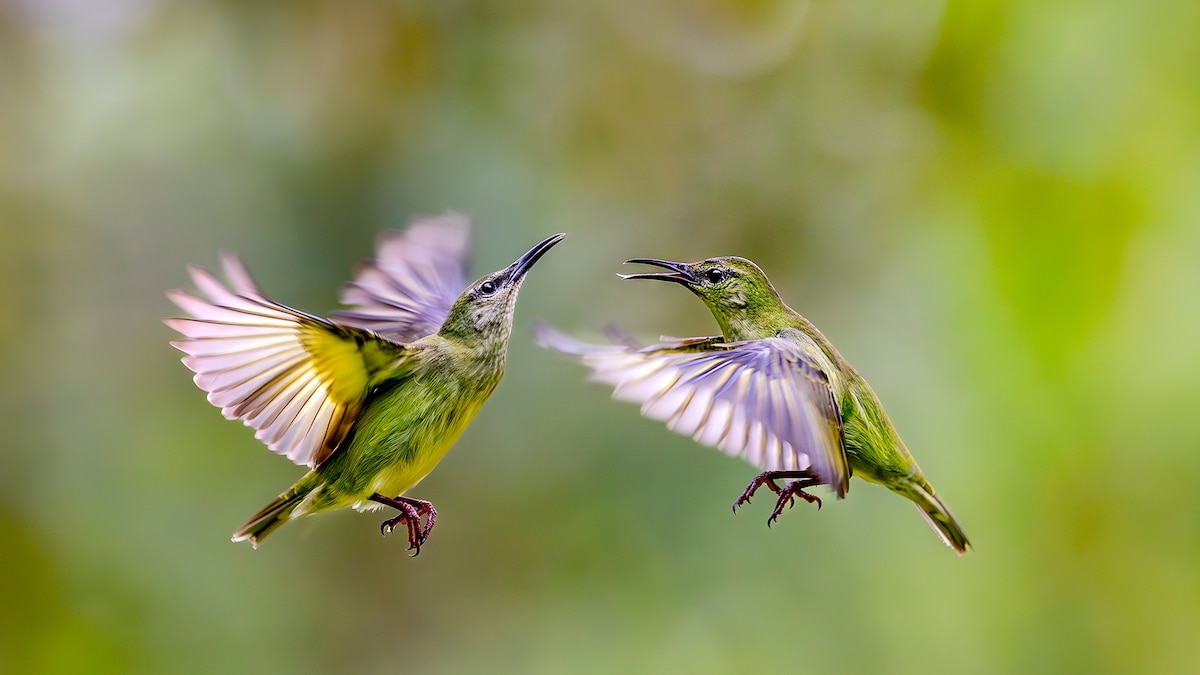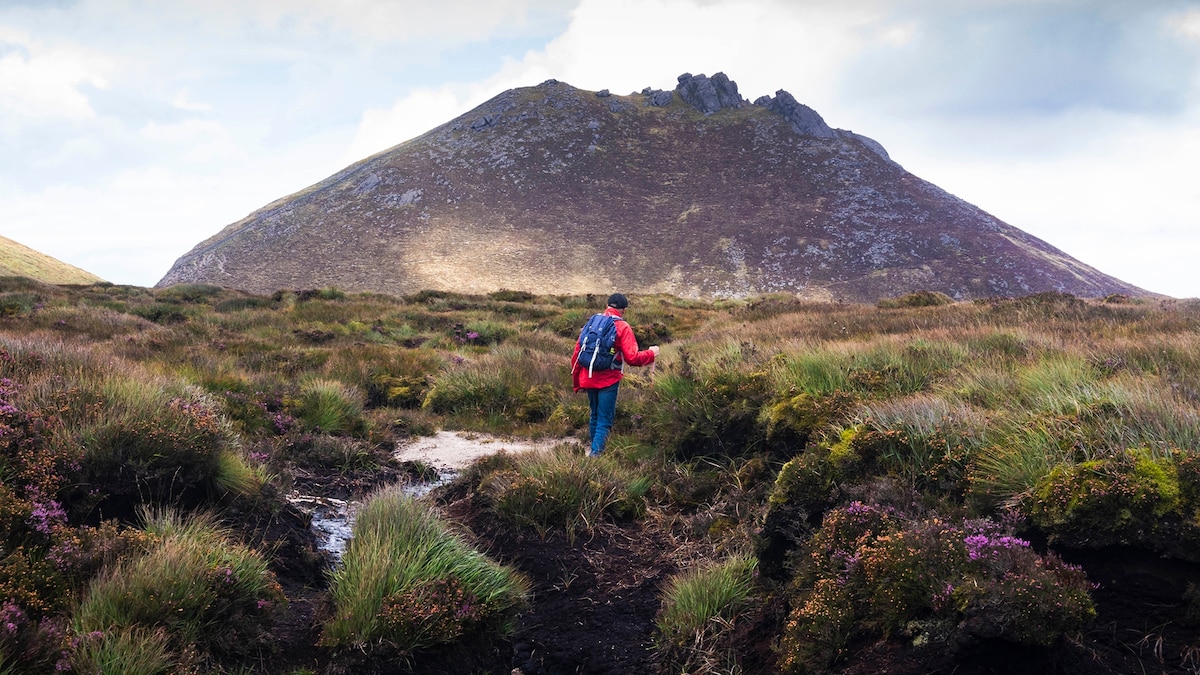Now Reading: Bird science has a bro-bias
-
01
Bird science has a bro-bias
Bird science has a bro-bias

Did you know female birds can sing?
That might sound like a simple statement—an obvious statement—but just a little over a decade ago, most scientists viewed birdsong as trait that belonged nearly exclusively to male birds.
This is just one of many ways scientists have historically short-changed female birds, researchers argue in a new study published in the International Journal of Avian Science.
“People tend to have an unconscious bias towards male birds, and that’s often because they’re brighter and easier to identify,” says lead author Joanna Wu, an ornithologist and ecologist at the University of California, Los Angeles.
Of course, in some species, such as crows, females and males are indistinguishable at a glance, making studying differences between the sexes even more difficult.
These biases echo similar ones in human studies and could impact efforts to save species from threats like climate change and habitat destruction.
“Without females, you’re really missing a large part of the population, and a pretty important part of the population for survival,” says Karan Odom, a behavior ecologist at the University of the Pacific, who was not involved in the new study.
Female birds fly farther, die sooner
Overlooking female birds in research “can have real conservation consequences,” says Wu. As an example, she points to golden-winged warblers. The female birds inhabit lower-elevation habitats than males outside of the breeding season. Rather than simply being a quirk of warbler biology, this behavioral difference has real world impacts, because lower-elevation habitats are easier to log.
While conservation efforts focused on the males’ habitat, one study found that, in a span of just 16 years, female golden-winged warblers lost twice as much non-breeding habitat as males.
When scouring the scientific literature for their perspective piece, Wu and her colleagues—all members of a birdwatching group called The Galbatross Project, which communicates the importance of female birds—also found a number of other interesting and understudied patterns.
“I was surprised to find studies are consistently finding females disperse farther than males do,” says Wu.
And this finding may be linked with another.
“Study after study consistently finds that female birds have a lower survival rate,” says Wu.
Take a bird flying from the United States to Panama as part of its yearly migration. If female birds fly even slightly farther than males, that’s more time spent in the crosshairs of predators, more energy expended, and more risk of starvation.
Differences between the sexes may also make female birds more susceptible to landscape-scale changes, such as climate change. And all of these factors are likely to have knock-on effects for the population.
You May Also Like
“I think there’s a lot of value in realizing where our knowledge gaps are,” says Odom, who worked on the 2014 Nature Communications study that determined not only that female birdsong was widespread across species, but also that it goes back the beginning of the birds’ family tree.
“If you care about birds, bird behavior, and bird conservation, I think it’s important to be recognizing that we might’ve missed some things,” says Odom. “And in this case, that happens to be females.”
Not a battle of the sexes
If all of this sounds a bit familiar, it’s probably because there’s been a similar pattern in human-focused science and medicine.
“It’s not surprising to me,” says Elizabeth Comen, a medical oncologist at NYU Langone Health and author of All in Her Head: The Truth and Lies Early Medicine Taught Us About Women’s Bodies and Why It Matters Today.
“Whether it’s culture, society, academics, or intellectual pursuits, [these things] are framed by those who are in positions of leadership and have the capacity and the resources to ask the questions. And for so long, those areas were dominated by men,” says Comen. “And that legacy pervades all sorts of intellectual investigation, whether it be medicine, anthropology, or animal behavior.”
For example, in humans, females can suffer from different diseases than males, or a disease may present differently between the sexes. And as with the golden-winged warblers, studying both is necessary to ensure the health of the population overall.
“If we understand why women live longer, but in poorer health, that impacts not only the health of women, but helps us understand how to improve the health of men,” says Comen. “So this really is not either-or, but really, it’s how can we align together to improve the health of everybody in society.”
(We’re finally studying women’s bodies. Here’s what we’re learning.)
The future of studying female birds
When it comes to birds, there is both good and bad news.
“One thing that most excites me about this paper is that there are solutions that we can pretty easily implement,” says Wu. “And the first and foremost is we just have to recognize that there are sex differences.”
In addition to increased awareness of the problem, other steps forward include training scientists and the public on how to better identify female birds, as well as utilizing blood, feather, and DNA samples to sex species that are more difficult to parse.
Studies and surveys can also better account for the way the sexes may use different habitats in both space and time—such as focusing on capturing birds during the migration season, when both sexes are active, rather than the mating season, when females may already be spending more time at a nest.
Making an effort to investigate birds outside of North America and Europe, which is where most studies have historically taken place, will also be key, says Wu. This is because many tropical songbirds are socially monogamous, which tends to be an indicator of species with female singing.
Funding also impacts which birds get studied, and in the U.S., that future is unclear. The Trump administration recently instructed the National Science Foundation, which funds a lot of basic science research including studies on birds, to flag words such as “female” when reviewing grant applications—a move that will almost definitely hinder research of females, be they birds or humans.
“My deepest hope for all of our health is that we are less divided and more united, and recognizing that everybody in society deserves just, fair, and ethical quality healthcare,” says Comen. “We cannot have that without examining that which is similar between us, but also that which is different.”
























